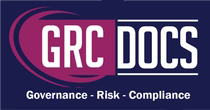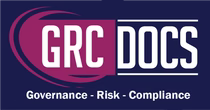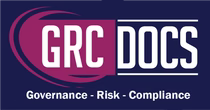SOC 2 Internal Audit Checklist Step-By-Step Compliance Guide
Introduction
In today's business environment, the protection of customer data transcends being merely a best practice; it has become an essential obligation. With increasing cyber threats and stringent regulatory requirements, organizations must prioritize the security, availability, and confidentiality of the data they handle. A tangible way to demonstrate your commitment to these principles is by obtaining SOC 2 compliance. This certification not only reflects your organization's adherence to a structured set of internal controls but also reassures clients and stakeholders about your dedication to managing risks and protecting information effectively.

Understanding SOC 2 Compliance
SOC 2, or Service Organization Control 2, is a comprehensive framework developed by the American Institute of CPAs (AICPA). It is specifically tailored for service providers that handle and store customer data in the cloud, thereby addressing the unique challenges of data security in cloud environments. SOC 2 compliance is based on five trust service criteria, each representing a core aspect of data protection and organizational reliability:
-
Security: This criterion focuses on protecting the system against unauthorized access, which includes both physical and logical access controls to prevent data breaches and unauthorized data manipulation.
-
Availability: Ensuring that systems are available for operation and use as committed or agreed upon is crucial for maintaining business continuity and customer satisfaction.
-
Processing Integrity: This involves ensuring that system processing is complete, valid, accurate, timely, and authorized to prevent errors and fraudulent activities.
-
Confidentiality: Protecting information designated as confidential is vital to maintaining client trust and meeting legal obligations regarding data protection.
-
Privacy: This criterion centers on protecting personal information in accordance with the organization’s privacy policy and applicable laws and regulations.
Each criterion is designed to address specific risks and operational challenges, and together they form a comprehensive blueprint for data security and risk management.
Preparing For A SOC 2 Internal Audit
Before diving into the audit, thorough preparation is key to a successful SOC 2 compliance process. Preparation involves multiple steps that ensure your organization is ready to meet the stringent requirements of the SOC 2 framework.
-
Define Your Scope: Begin by determining which of the trust service criteria are applicable to your organization. Not all criteria may be relevant to your operations, so it is important to focus on those that align with your specific services and client requirements. By clearly defining the scope, you can concentrate your efforts on areas that are most pertinent to your business and avoid unnecessary work.
-
Assemble Your Audit Team: Gather a team of skilled professionals who have a deep understanding of your systems and processes. This team should be cross-functional, including IT staff, compliance officers, and other relevant personnel who can provide valuable insights and support during the audit. Having a well-rounded team ensures that all aspects of your operations are covered and that the audit is thorough and effective.
-
Review Current Policies and Procedures: Examine your existing policies and procedures to ensure they align with SOC 2 requirements. This involves a detailed review of security policies, access controls, incident response plans, and data retention policies. By identifying any gaps or areas for improvement, you can make necessary adjustments before the audit begins, thereby increasing your chances of achieving compliance.
- Conduct a Risk Assessment: Perform a comprehensive risk assessment to identify potential threats and vulnerabilities to your systems and data. This assessment will help prioritize areas that need improvement and ensure that your internal controls effectively mitigate these risks. By understanding your risk landscape, you can allocate resources strategically and focus on strengthening the most critical areas.
The SOC 2 Internal Audit Checklist
Now that you're prepared, it's time to dive into the audit itself. Use this checklist to guide your internal audit process, ensuring that each trust service criterion is thoroughly evaluated.
1. Security
-
Access Controls: Verify that access to systems and data is restricted to authorized personnel only. Implement role-based access controls to minimize the risk of unauthorized access.
-
Network Security: Assess firewall configurations, intrusion detection systems, and other network protections to ensure they are robust and effective in preventing cyber threats.
-
Data Encryption: Ensure data is encrypted both in transit and at rest, using industry-standard encryption protocols to protect sensitive information from unauthorized access.
-
Incident Response: Review your incident response plan to confirm it is comprehensive, up-to-date, and capable of addressing various security incidents promptly and efficiently.
2. Availability
-
System Monitoring: Confirm that systems are monitored continuously for uptime and performance, using automated monitoring tools to detect and address issues in real-time.
-
Backup and Recovery: Validate that regular backups are performed and that recovery procedures are tested and effective, ensuring that critical data can be restored quickly in the event of a system failure.
-
Capacity Planning: Ensure that systems have the capacity to handle expected workloads, with scalability plans in place to accommodate future growth and prevent performance bottlenecks.
3. Processing Integrity
-
Data Validation: Check that data inputs are validated for accuracy and completeness, implementing validation rules and automated checks to prevent data entry errors.
-
Error Handling: Verify that systems can detect and correct errors in processing, with robust error-handling mechanisms to ensure data integrity and reliability.
-
Transaction Monitoring: Ensure transactions are logged and monitored for discrepancies, using audit trails and monitoring tools to detect and investigate anomalies.
4. Confidentiality
-
Data Classification: Classify data according to its level of sensitivity and apply appropriate controls, ensuring that confidential information is protected with heightened security measures.
-
Encryption: Confirm that confidential data is encrypted and stored securely, both at rest and in transit, to prevent unauthorized access and data breaches.
-
Access Reviews: Regularly review access permissions to ensure they are up-to-date and aligned with current roles and responsibilities, minimizing the risk of unauthorized data access.
5. Privacy
-
Privacy Policies: Ensure privacy policies are clear, accessible, and communicated to clients, providing transparency about how personal information is collected, used, and protected.
-
Data Subject Rights: Verify that procedures are in place to handle requests related to data subject rights, such as access, correction, and deletion, in compliance with relevant data protection regulations.
-
Third-Party Agreements: Review agreements with third-party vendors to ensure compliance with privacy standards, and that these vendors adhere to the same level of data protection as your organization.
Steps After The Internal Audit
Once the internal audit is complete, it's time to analyze the findings and take action to address any identified issues or deficiencies.
-
Review Findings: Gather your audit team to review the findings in detail. Identify any gaps in compliance and areas needing improvement, discussing the root causes and potential solutions for each issue. This collaborative review process ensures that all team members understand the audit results and are aligned on the necessary steps forward.
-
Develop an Action Plan: Create a detailed action plan to address any deficiencies uncovered during the audit. This plan should outline specific actions, assign responsibilities, and set timelines for implementation, ensuring that improvements are made systematically and efficiently. By having a clear plan, you can track progress and hold team members accountable for their roles in achieving compliance.
-
Implement Improvements: Begin implementing the changes outlined in your action plan. This may involve updating policies, enhancing security measures, or providing additional staff training to address identified weaknesses. Ensure that all improvements are documented and communicated to relevant stakeholders, reinforcing your organization's commitment to maintaining high standards of data protection.
- Continuous Monitoring: SOC 2 compliance is an ongoing process that requires regular attention and adaptation. Establish a system for continuous monitoring to ensure that controls remain effective and compliant over time. Regularly review and update your policies and procedures as needed, keeping pace with evolving threats, regulatory changes, and organizational growth. By maintaining a proactive approach, you can safeguard your data, reputation, and client relationships effectively.
Conclusion
Achieving SOC 2 compliance is a significant undertaking, but it is essential for organizations that handle sensitive customer data. By following this internal audit checklist, you can systematically evaluate your internal controls and ensure that your organization meets SOC 2 standards. This not only enhances your security posture but also builds trust with your clients and stakeholders, demonstrating your commitment to data protection and risk management.






